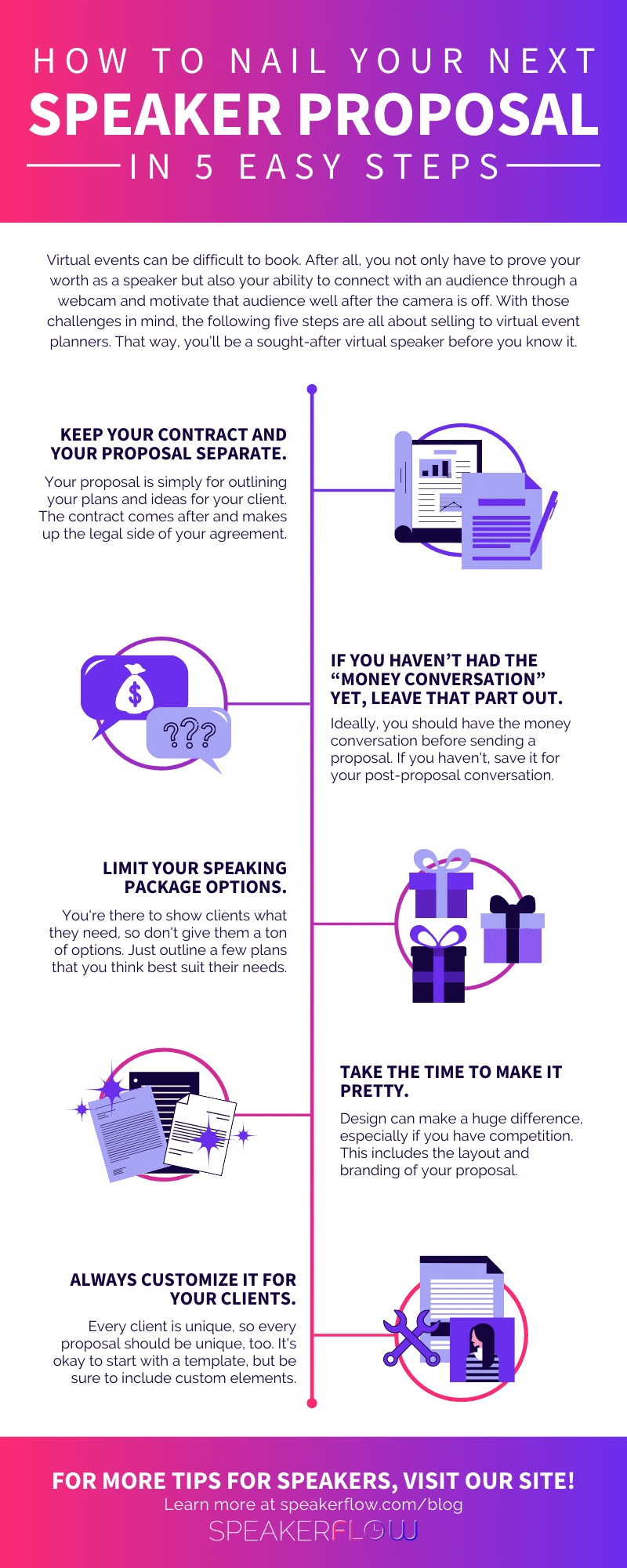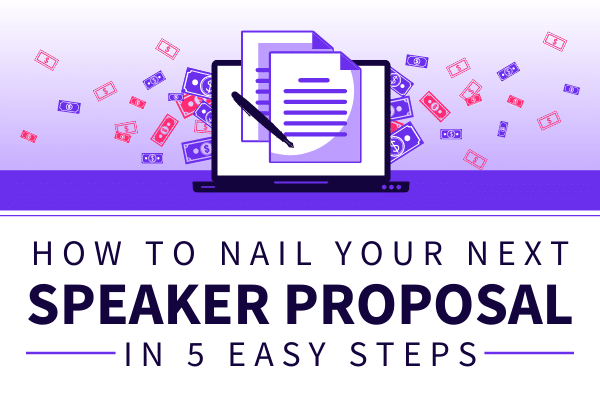When was the last time you jumped off a sales call with an event organizer and thought to yourself, “I’ve got this in the bag”? Maybe it was last week or maybe it was last year. Either way, if you want to boost your confidence, when it comes to speaker sales, and close more opportunities, being better prepared is key. That includes preparing your speaking packages, your list of AV requirements and speaking collateral, and – perhaps the most important component of all – your speaker proposal.
As a general rule, a high-quality speaker proposal covers the basics of your services as a professional speaker. These include who you are, what your presentation includes, what results your clients can expect, and how much you charge for your recommended speaking package.
However, there are also a handful of lesser-known rules that can level up your proposal and boost your close rates. Here, we’ll break down five of these steps along with why they matter, from a sales standpoint. That way, you can be better prepared for your next potential client and speed up the time it takes for them to realize how much they’d benefit from hiring you. Talk about a win-win! 🎉
1. Keep your contract and your proposal separate.
First, remember that your contract and your proposal should be two separate documents. The former, your proposal, is for presenting your potential client with the basic details of your work together. This includes:
- A summary of the client’s problem and/or the outcomes they’re looking for
- An outline of how to solve that problem (and why you’re the best fit for the job)
- Testimonials or recommendations from a few of your past clients
- An outline of your role in the project including cost, timeline, and scope
- A closing page for them to accept and sign
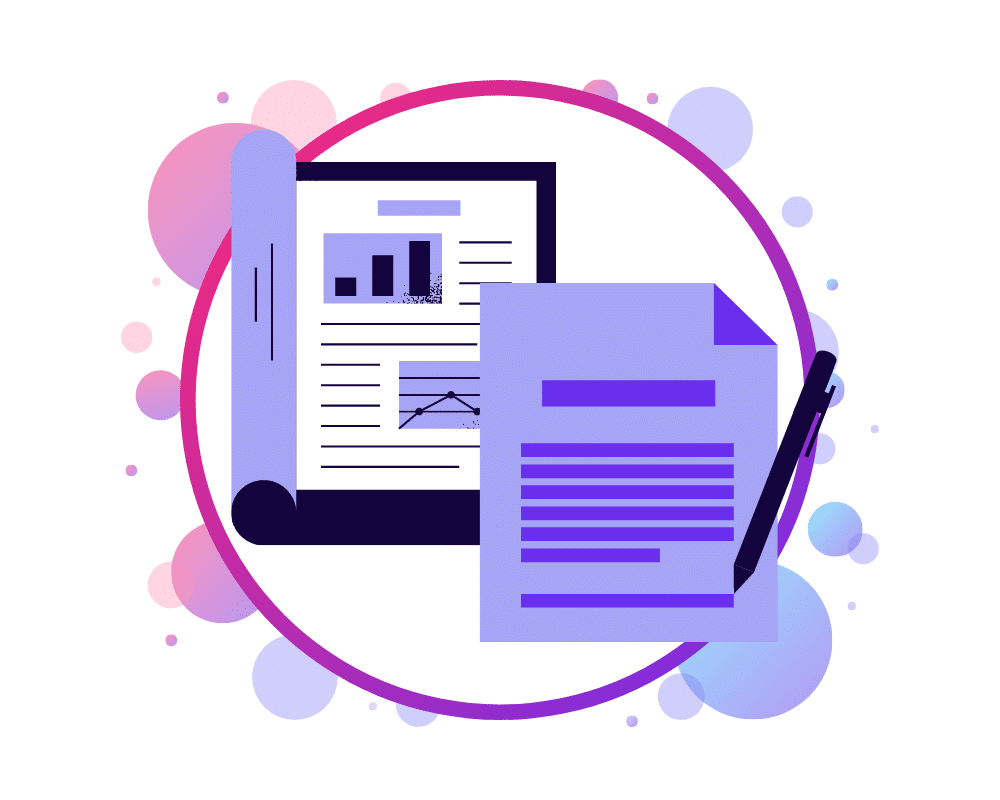
Each of these details also functions as a test of your communication during your initial sales conversation. Did you show you understood their challenges, for example? Did you mention how you can help? And did you outline the general cost and scope of your work? If you handled the conversation well, the answer to each of these questions is “yes” and, as a result, your speaker proposal is a confirmation of what you’ve already discussed. This essentially leads your client to a “soft yes” (i.e. the initial confirmation that they want to hire you) because they already know your value.
After that, your contract is for getting the “hard yes” from your potential client and sharing your terms and conditions (termination clause, confidentiality clause, etc.). At this point, they’re sure they want to hire you and they completely understand the broad details of your work together. They just need to confirm their intentions in a legally binding way, so the work can truly begin.
Remember, if you jump right to the contract, you could (a) surprise your client with information they didn’t know or (b) make them feel pressured into signing. Sending your speaker proposal first prevents both.
2. If you haven’t had the “money conversation” yet, leave that part out.
The second speaker proposal “rule” is another way to prevent surprises: don’t include pricing information if you haven’t already discussed it with your potential client.
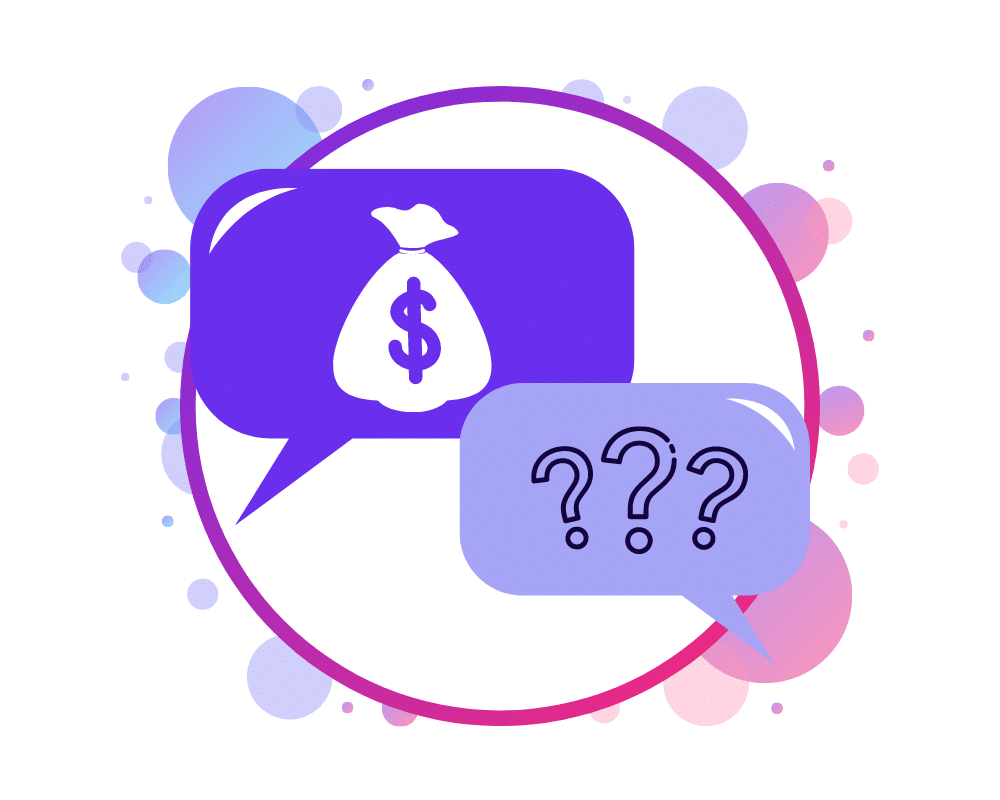
Obviously, this is a huge aspect of the proposal to leave out. However, for many speakers having the “money conversation” is challenging, and it’s hard for them to lead the surrounding discussion. Maybe they’re new to professional speaking or are testing out a higher pricing strategy. Maybe they’re pitching a prestigious client and eager to please. You may have experienced one or two of these scenarios in the past, and I know they don’t make it easy to say, “I’m an expert, this is how much my expertise costs, and I am worth it”. Trust me – As someone that avoids any possibility of confrontation, I feel your pain!
But, in any case, when you don’t lead the conversation, the decision-maker will. If you don’t demonstrate you’re the expert, they won’t see you that way. If you don’t disclose your fees, they won’t pay you like an expert, either. In short, if you don’t make time to have the “money conversation” before sending your proposal, you give up a lot of negotiating power. You also risk shocking your potential client with the true cost of your services, making them unhappily surprised before you’ve even had a chance to begin your partnership.
To avoid this, get the money conversation out of the way first. Make it clear how many speaking packages you offer, what services or products are included, and how much each costs. Then, in your proposal, reiterate these details. That way, they’ll understand your price and give you a quick and definitive “yes” or “no”. Plus, if they want to negotiate, you’ll be in a position to control the dialogue.
3. Limit your speaking package options.
Speaking of price, the third key to a killer speaker proposal is limited speaking packages. For many speakers – especially those that are still new to the industry – it’s tempting to provide as many options as possible. After all, the more options you provide, the more likely they are to see one they like, right? Wrong! In fact, the result is typically the polar opposite.

Think about going to a new restaurant, for example. When you open the menu, you might be considering personal preferences, allergies, or recommendations from friends or family. But if you haven’t been there before and the menu has 100 dishes, the sheer number of options (combined with the aforementioned considerations) will make it impossible to choose quickly. By the time you do, you’ll also likely be tired and a little annoyed, as you weren’t looking for a culinary puzzle. You just wanted some food!
Likewise, in speaker sales, the same rule and emotions apply, a pattern is known as Hick’s Law. Coined in 1952 by psychologists William Edmund Hick and Ray Hyman, this rule dictates that “the more stimuli to choose from [in an environment], the longer it takes the user to make a decision on which one to interact with”. In other words, the more options you give someone, the longer it will take them to focus on one.
This is especially important in your speaker proposal because it’s the first opportunity you have to outline your services in detail. With Hick’s Law in mind, your proposal shouldn’t say “Which speaking package do you want?”. It should say “This is the speaking package I recommend, based on your needs” so the choice is as simple and convenient as possible. When it doubt, just aim for the opposite of the restaurant example. 🙂
4. Take the time to make it pretty.
After outlining the content of your speaker proposal, the next step is to make it look as valuable as it truly is. Again, many speakers tend to skip over this step. You might even be thinking right now, “When I’m the right fit for an event, it’s my speaking package that seals the deal, not the design” or “Looks don’t really matter that much”. However, the fact of the matter is that they absolutely do.
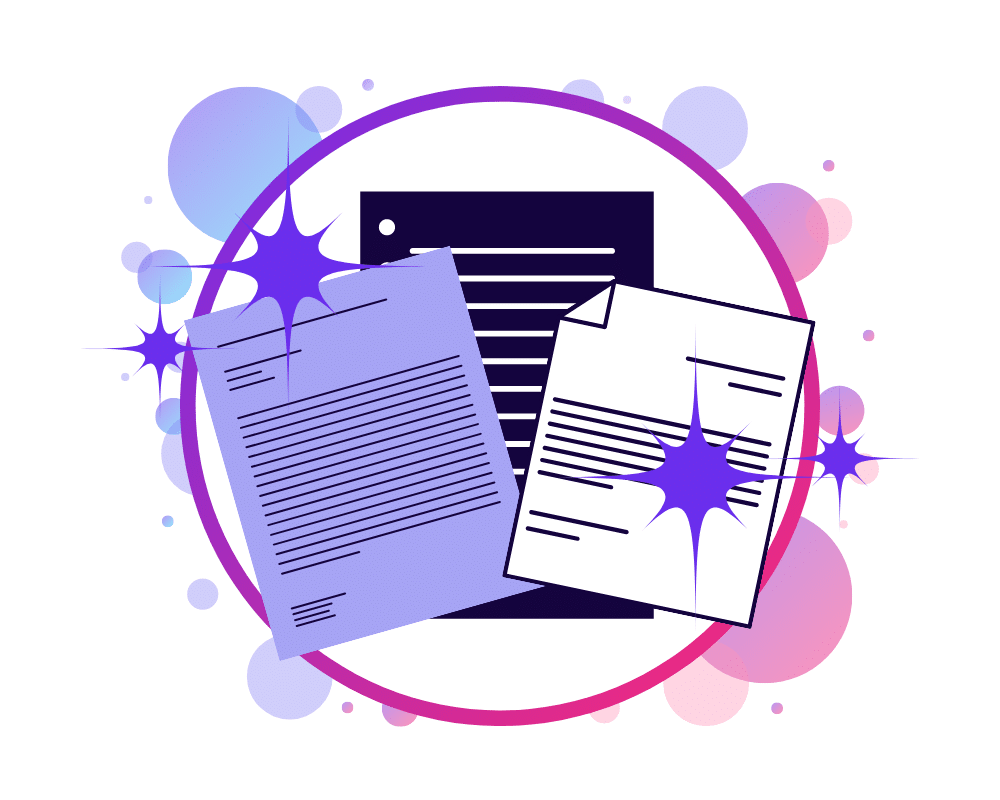
Did you know, in the average sales presentation, the viewer begins judging your content within the first 13 milliseconds? Additionally, did you know that within another 100 milliseconds, they’ve not only emotionally reacted to it but also started deciding whether or not they will accept or reject the sale? In less than the blink of an eye, that’s a jump from “first impression” to “yes” or “no”.
This means that your website, one-sheet, photography – anything included in your sales process – has the potential to either win over or push away an event organizer in less than a second, whether you intend to or not. This also means that, if you want to maximize the effectiveness of any of these components (including your speaker proposal), investing in high-quality design can have a huge return on investment.
To level up your proposal’s design, first and foremost, keep it clean-cut. The design elements are undeniably important, but they shouldn’t distract from the content of your proposal. Second, use the design to break up the text, so the viewer is more likely to stay engaged. Lastly, keep your design on-brand. In many ways, your proposal is a representation of your speaking business, so the colors, fonts, and general style should all be consistent and – more importantly – reinforce how dynamic and powerful your speaking programs are.
5. Always customize it for your clients.
Finally, the fifth and last step to an exceptional speaker proposal is customization. In any sales conversation, it’s easier to show your investment to the project if you first show your investment to the people behind it. In a speaker proposal, that means going beyond a template and adding custom elements that show the event organizer you’re listening and you care. These can include things like:

- A custom introductory video to outline what the proposal includes and share how executed you are to work together.
- Jokes, photos, or additional resources related to your previous conversation(s).
- Testimonials or videos from mutual connections that enjoyed working with you.
- References to their specific event, such as “After Day 1’s Meet-and-Greet, my top tier speaking package covers a dinner with me and your executives”.
- References to recent changes or news in their company, such as a merger.
Ultimately, these additions – along with the steps we covered above – are just a few of the things you can do to ensure your proposal closes the sale. Beyond these, the most important thing to keep in mind is that it’s always okay to iterate. If you find another “step” that works in your speaking business, just add that to your proposal checklist. That way, the next time you send off a speaker proposal, you’ll be able to say “I’ve got this in the bag” without any hesitation. 👌
For more information about sales in the speaking industry, check out our ultimate sales guide or our previous blog, “Want To Impress Every Event Planner You Meet? Read This”.
Additionally, for tools and templates specific to speaker proposals, ask our team about Better Proposals or learn more about our partnership here.
